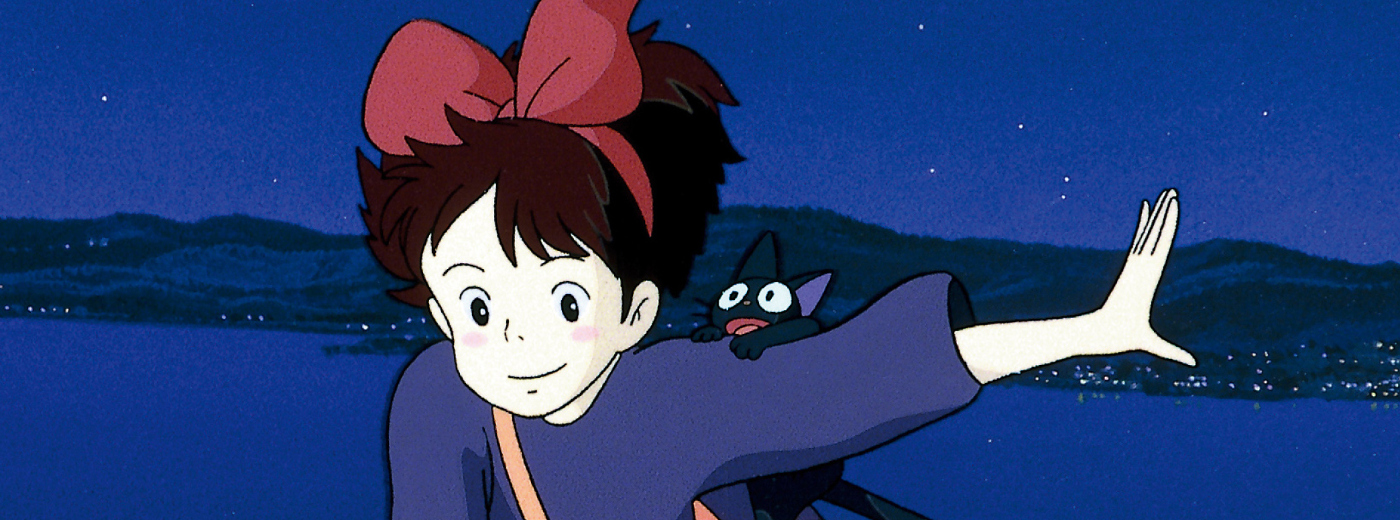Studio Ghibli and the representation of work
Following on from the Disney research I was encouraged to explore further the influences of animations on children’s emerging understanding of work and organizational life. I had discussed this with my colleagues Dr Luli Van der Does and Dr Peter Matanle who have a shared fascination with animations – having also written about them before – and moved on to the topic of the Japanese animation in the form of Studio Ghibli. The Japanese films portray work in such a different way to Disney that by the end of our conversations we really wanted to write another paper showing how positively and pro-active work was within these films. I introduced these films to my daughter Eleanor from the age of 3 and they have played a rather large emotional and historical role in our own relationship so they have an important role in our mutual, unspoken language. We reference them regularly and the idea of exploring the films further seemed like a fantastic idea. Peter, Luli and I decided to create a movie group of sorts where we would (usually during the evenings after regular work) watch 2 or 3 of the films a week. We then met on a Monday evening (via Skype) to discuss the films and their relation to work and organization and took individual notes and group ones from our collective discussion. Unsurprisingly – for anybody who knows the films – work was a major theme in the majority of the films. Together we created a conference paper titled “Spirited Away? Representations of women’s work in Studio Ghibli animations.”

The personal and organizational development of the communities in Ghibli films revolve around the notion that everyone – even the least member of the community – has a role to play in that organisational community. The very existence of the person in the community gives the meaning and a role to that person to play. Conversely, participation in the community organisation gives the person an existential meaning. In Japanese, this notion of negotiating a place or role in the community is called ‘ibasho’, a word made up of ‘i (existence)’ and ‘basho (location)’. A wonderful example of Ibasho appears in the film Spirited Away, regularly voted as the best animated film of all time. We see a young girl, Chihiro, get lost in a magical world – once there she has to literally give up her name to gain employment. She is from that moment on referred to as Sen and has no memory of her name reflecting a wider identity abandonment that many of us go through when entering the workplace. She is silenced in the workplace with a magical zip across the mouth. Sen gains her freedom and rescues her parents by finding a job role in the community and working hard. She eventually manages to learn how to escape through integration (and her job role) in the wider community – but this happens gradually, over time and with support. This is not a unique case in Studio Ghibli films. They tend to portray work in a positive way (in stark contrast to the monotony of work reflected in early Disney).
Kiki’s Delivery Service, in which a young girl leaves home to find her own career path and sets up her own business and Whisper of the Heart – a film primarily about finding our calling in life through a job role –are both fantastic representations of Ibasho and how positively Ghibli reflects work (as compared to the subjection shown in Disney). The paper we are developing based on this data explore organizational readiness in these Japanese films as contrasted to Disney. It conjures up the question about how culture can influence children to view work from a very early age. We look forward to the empirical stage of this project as well where we will finally start to see what children themselves think about work (rather than inferring it as adults). Children are very much neglected in the organizational studies literature and have been for some years. As with many issues they provide an insight that many of us are simply incapable of tapping in to – an un-listened to voice that we really do need to listen to and consider when designing future organizations.

In August 2018 I was extremely lucky to go to Japan and present this Studio Ghibli paper at the Standing Conference of Organizational Symbolism (SCOS) conference – it is still totally surprising and so wonderful that I can make a living and visit places by simply writing. Imagining things – anything I want – and writing about it. The first time I was on an aeroplane was when I was 18 so academia has really opened up doors to see things that I never even imagined seeing. As it was the holidays I also had the fortune of extending the trip and travelling with my 10 year old daughter – Eleanor. It felt like a risk to take her to such a distant place (where I had little knowledge of the language) but we had a wonderful adventure and will remember it for the rest of our lives. Here is a fantastic picture of us up doing some sightseeing prior to the conference in the Sky Tree tower – i have been up a few of these towers now but never have I seen such a view:

After presenting my work in Tokyo I travelled down to Hiroshima so that I could work with colleagues at Hiroshima University. We caught the Shinkansen bullet train which surpassed my (already rather high!) expectations: bang on time, spotlessly clean and having three feet of leg room was vastly different to my usual train experience from Doncaster to Durham. I’ll return to this in a future blog post about the general awfulness of commuting. While on the bullet train I recalled the recently breaking news story of a workers initiation in which new recruits were told to crouch between tracks as high speed trains passed in opposite directions. I guess management felt it would build trust but in reality it seems like an insanely tortuous thing to ask of someone – especially someone new and very likely to be more willing in order to keep the job. Whilst not nearly as terrifying(!) it reminded me of joining Durham and being asked two days in to the role to take 60 exam scripts to mark on a topic I had limited knowledge on due to another lecturer being ill. If they were dropped on me now I would have said no – I simply didn’t have the expertise or time to mark that many scripts and it took a huge, short-term toll on my family life. New recruits tend to just want to conform and will do whatever you tell them. Ethical standards aside, the trains were beautiful (see picture below). I do worry slightly that I am becoming a proper rail enthusiast. Not waking up at 5am and filming them coming in to the station enthusiastic (!) but wrapped up in the beauty of them, the history of them – there is something magical about trains and especially stations. Something romantic. I can think of at least three life changing moments that have happened to me on train station platforms, each of them heartbreaking and insane in their own ways, things that don’t happen at an Esso garage on the M42.

In Hiroshima Eleanor and I stayed in a hotel about 100 metres from where the atomic bomb fell 70 years before. It was hard not to think about what happened that day and Eleanor and I had an uncharacteristically grown up ethical debate about what happened. We visited the peace museum and she saw the effects of the atomic bomb – the sheer devastation it brought not only then but in the years after and to a city that you simply would not recognise now compared to the pictures. It is a beautiful and vibrant city. I asked Eleanor how she felt about the dropping of the bomb and she totally surprised me. Rather than saying the obvious (the bombing was wrong and unjustified, given what she had seen in the museum) she said she felt while it was horrific that it was necessary and that more people would have died without dropping the bomb because the war would have continued for longer. That kind of calculation from a 10 year old was eerily unnerving. Especially as it wasn’t as if I was feeding her the line – like some kid who supports his or her parents’ political views because they hear them so regularly. I try not to do that with her, we debate but I tend to play devil’s advocate to whatever she believes. But more often than not we are busier debating films or the latest Taylor Swift album. My own view about Hiroshima (reinforced by the museum and in the spirit of the thread films such as Studio Ghibli’s Grave of the Fireflies) is that I think the bomb should not have been dropped (I had never told her this throughout the whole trip) but it fascinated me how independently minded she was in taking that view. Especially after visiting the museum and seeing how awful it had been in the aftermath. For her to be capable of thinking of future horrors of a continuation of the war in a longer term way than an old man like me, it was surprising. Maybe she will read this in the future and say she has changed her mind since or maybe not. But these chats, in these spaces, are why I adore spending so much time with her. She makes me even question whether I am right about this…or indeed anything!

In the afternoon in Hiroshima, after a writing session we visited Miyajima – an incredible little island populated by tame deer (that mingle with you, as if they were dogs or cats), and with a huge shrine on the beach. It was beautiful, but extremely hot. We arrived in Japan two weeks after what had been one of the hottest periods in their recorded history but left extremely impressed with everything we had seen and experienced!






